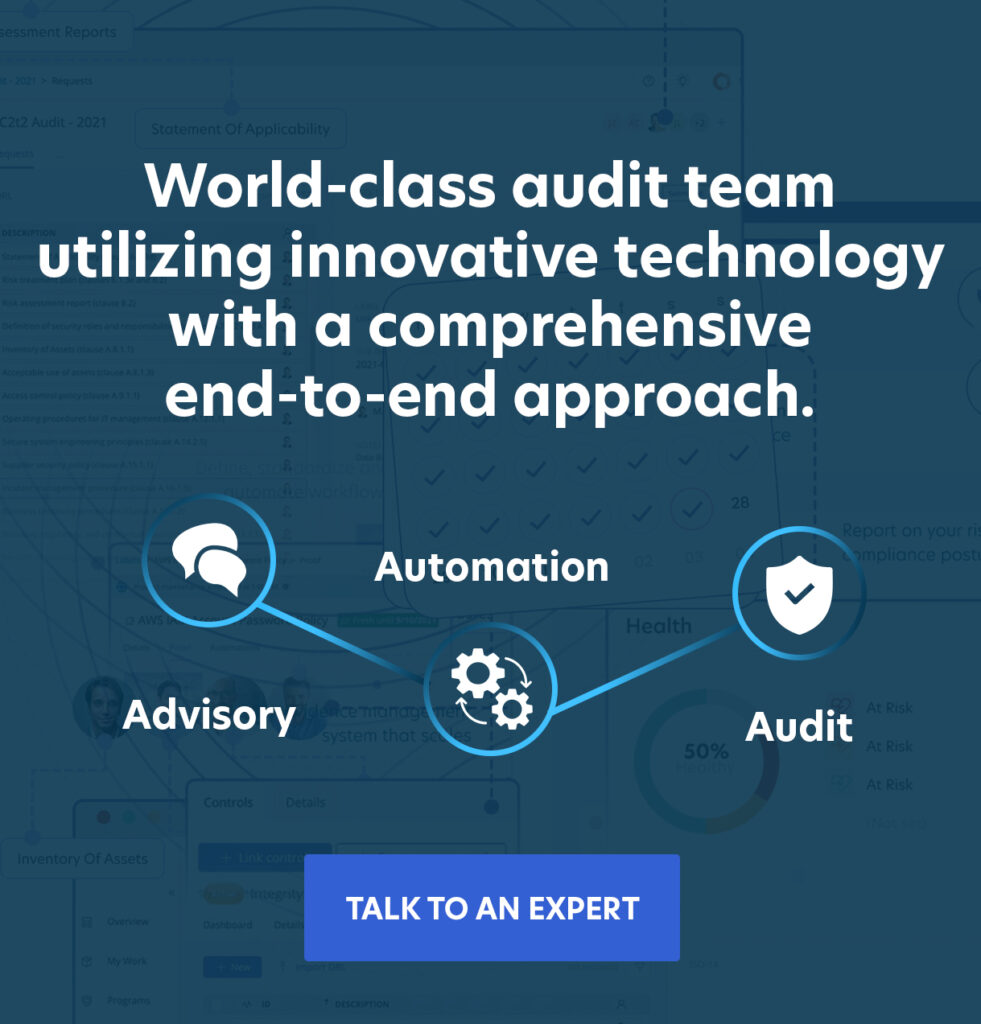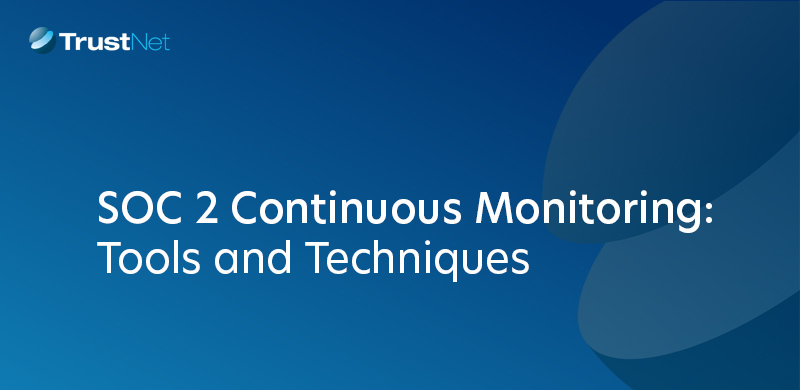How to Prepare for a SOC 2 Type II Audit?
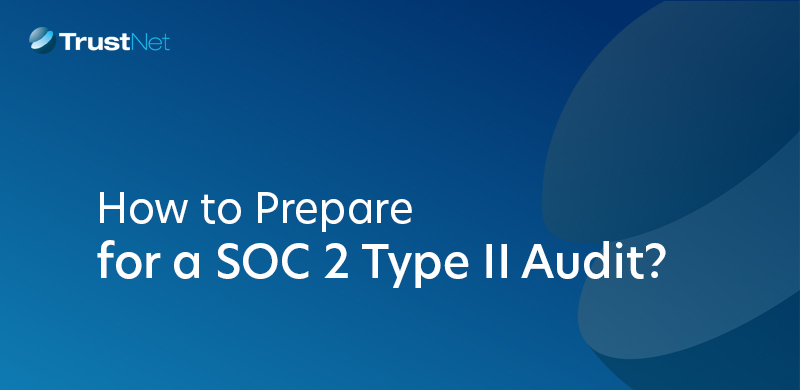
TL;DR
Preparing for a SOC 2 Type II audit requires clear scoping, robust technical controls, automated evidence collection, and continuous monitoring. This guide walks engineering and compliance teams through scoping, gap analysis, control implementation, audit readiness, and post-audit remediation. Use tools like TrustNet’s GhostWatch to streamline compliance, reduce risk, and prove operational effectiveness across the full audit period.
SOC 2 Type II clearly signals to customers that your organization consistently enforces secure, compliant operations over time. It evaluates whether those controls actually work over a sustained audit period, typically ranging from 6 to 12 months.
If you’re managing infrastructure, security, or compliance at a growing tech company, Type II is the audit that matters. It validates the operational effectiveness of your technical and procedural controls across the five Trust Services Criteria:
-
- Security
- Availability
- Processing Integrity
- Confidentiality
- Privacy
This article is a tactical, engineering-first guide designed for teams who need to build, operate, and prove control effectiveness at scale. You’ll get:
-
- A breakdown of how to scope your audit environment
- A technical gap assessment and control mapping approach
- Guidance on implementing controls with real-world tools
- Evidence collection workflows that scale with automation
- Best practices for internal testing, auditor communication, and post-audit remediation
If you’re looking to operationalize SOC 2 Type II compliance without slowing down engineering velocity, this guide is built for your team.
Scoping: Define Your Audit Boundaries
Before you prepare controls or gather evidence, you need to define what the audit will cover. Scoping sets the foundation for your SOC 2 Type II engagement. A poorly scoped audit increases the risk of findings, inflates cost, and wastes engineering time.
Start by identifying what’s in scope. This includes:
-
- Systems and services that handle customer or internal sensitive data
- Applications, APIs, and backend components used to deliver the product
- Cloud infrastructure (e.g., AWS, GCP, Azure accounts) supporting critical services
- Internal tools that influence control environments (CI/CD, IAM, ticketing, alerting)
- Third-party vendors involved in data processing, hosting, authentication, or monitoring
Next, map your business processes to the five SOC 2 Trust Services Criteria:
-
- Security – such as access controls, firewalls, and authentication
- Availability – such as backups, capacity planning, disaster recovery, and business continuity
- Processing Integrity – such as change control, deployment workflows, input validation, and error handling
- Confidentiality – such as data classification, encryption, access restrictions based on data sensitivity, and secure data disposal
- Privacy – such as consent management, anonymization, privacy notices, and breach notification procedures
Then document everything:
-
- Data flow diagrams showing how data moves across systems
- Policies and procedures
- Network topology maps for ingress/egress points and segmentation
- Asset inventories of compute resources, storage systems, endpoints, software, and service accounts.
A tightly scoped audit gives you control. It ensures your controls apply to the right areas and sets clear expectations for your audit timeline and resource allocation.
Ready to streamline your SOC 2 Type II audit with expert guidance?
TrustNet’s AICPA-accredited auditors work directly with technical teams to reduce friction, validate control design, and ensure evidence meets audit standards
Gap Assessment: Baseline Readiness and Control Mapping
After scoping, you need to assess whether your current controls satisfy SOC 2 requirements. A SOC 2 gap analysis identifies where your environment falls short and helps you prioritize remediation before the audit period begins.
Step 1: Conduct a Targeted Gap Analysis
Start by evaluating your environment against the relevant Trust Services Criteria. Review both technical controls (e.g., IAM configurations, SIEM alerts) and administrative controls (e.g., policies, employee onboarding checklists). Use a validated SOC 2 compliance checklist that aligns with your scope.
If you’re looking to accelerate this process, the TrustNet SOC Accelerator+ can help you run a focused readiness assessment, mapping your current controls to SOC 2 requirements and identifying gaps early.
Learn more here: SOC Accelerator+
Step 2: Map Controls to Criteria
Explicitly map each existing control to its corresponding Trust Services Criteria. This ensures traceability when auditors request evidence. Maintain this mapping in a centralized source of truth; compliance tools help here.
Step 3: Automate Where Possible
Use tools like TrustNet’s GhostWatch or similar compliance automation platforms to:
-
- Automate gap detection across your systems
- Track control status in real time
- Flag missing or outdated documentation
- Link evidence directly to control objectives
Running a control gap analysis early gives your team the clarity to act. It prevents last-minute scrambles and strengthens your audit posture from day one.
Control Implementation: Technical and Process Controls
Once you’ve identified control gaps, move into implementation. Execution matters as SOC 2 Type II doesn’t just look for defined policies, it evaluates whether your team consistently enforces those controls over time.
Below are the core control domains that require action:
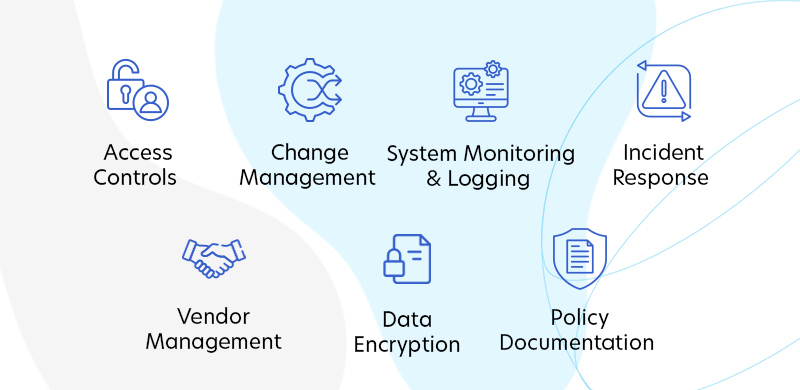
Access Controls
Enforce strict access boundaries across cloud infrastructure, internal tools, and production systems:
- Use role-based access control (RBAC) with least privilege as the baseline
- Require multi-factor authentication (MFA) for all privileged access
- Integrate SSO with centralized identity providers
- Conduct and document quarterly access reviews
Change Management
Treat change as a controlled process. Align with DevOps velocity without sacrificing traceability:
- Use version control systems with protected branches
- Require peer review and approval workflows for infrastructure and code changes
- Log deployment events and link to ticketing or change requests
System Monitoring & Logging
Build visibility into every layer of your environment:
- Forward logs into a centralized SIEM
- Create alerting rules for high-risk events (e.g., failed logins, privilege escalations)
- Enforce log retention policies that meet SOC 2 criteria
Incident Response
Operationalize your response plan before the audit period begins:
- Write and distribute incident response playbooks
- Train staff using tabletop exercises and real-world simulations
- Maintain a timeline of incidents, response actions, and postmortems
- Define severity levels and escalation paths
Vendor Management
Don’t let third-party risk create audit failures:
- Perform ongoing monitoring and annual reassessments of third-party vendors to ensure continued compliance with security and privacy requirements
- Maintain an inventory of vendors that handle sensitive data
- Collect and review their SOC 2 reports, security certifications, or penetration test results
- Define contract language that enforces security obligations
Data Encryption
Protect data at every stage:
- Use AES-256 or equivalent for encryption at rest
- Use TLS 1.2+ for all data in transit
- Document key management responsibilities and rotation schedules
Policy Documentation
Support every technical control with a written policy:
- Ensure policies are reviewed and updated annually or as needed
- Maintain current security policies, procedures, and standards
- Track employee acknowledgments for training and policy acceptance
- Store documents in a system with version control and change history
Strong control implementation creates the operational proof that your auditor will look for. Build enforcement into your pipelines, not just your playbooks.
Evidence Collection: Building Your Audit Trail
SOC 2 Type II audits rely on real evidence that your controls didn’t just exist but worked throughout the entire audit window. Collecting this evidence isn’t just an admin task. It’s core to audit success.
Identify Control-Specific Evidence
For each control in your environment, gather artifacts that prove operational effectiveness. Focus on sources that are timestamped, attributable, and clearly linked to the control objective:
-
- Access logs from IAM or cloud platforms
- Screenshots showing security configurations or policy enforcement
- Support tickets tied to change management, incidents, or access revocation
- Training records and policy sign-offs with user attribution
- Monitoring alerts and SIEM events that align with defined thresholds
Automate Evidence Collection
Manual collection doesn’t scale. Use a SOC 2 compliance tool like TrustNet’s GhostWatch to:
-
- Continuously gather logs, tickets, and screenshots from integrated systems
- Tag evidence with control IDs and Trust Services Criteria
- Validate timestamping and completeness automatically
Structure and Store Evidence for Audit Readiness
- Organize your audit repository by Trust Services Criteria and control reference:
- Use folders or control IDs for structure
- Attach control mappings for traceability
- Maintain version control and access logs for the repository itself
Make sure all evidence spans the full audit period and clearly shows when, how, and by whom the control was executed. Clean audit trails build trust and help avoid rework during an auditor review.
Internal Testing & Continuous Monitoring
Internal testing and real-time monitoring help you catch failures early, stay audit-ready, and prove that your SOC 2 compliance program is more than just policy on paper.
— Test Controls with Precision
Run structured internal audits and control tests on a regular cadence:
- Perform mock audits that simulate auditor expectations and timelines
- Use test cases to verify access reviews, logging configurations, and incident response readiness
- Document findings in a centralized tracker and assign owners for remediation
— Monitor Controls in Real-Time
Continuous monitoring reduces risk and adds credibility to your audit trail. Use security and compliance platforms to:
- Track changes to access rights, IAM roles, and critical system configurations
- Scan for vulnerabilities and confirm remediation within defined SLAs
- Alert on control deviations and generate evidence automatically
— Remediate and Log Everything
When a test fails or a control drifts:
- Investigate the root cause and fix the issue immediately
- Document the incident, actions taken, and timeline
- Tag the log to the relevant control for audit traceability
Testing and monitoring show that your SOC 2 program doesn’t just exist; it performs.
Working with Your Auditor: Fieldwork and Communication
The audit fieldwork phase tests whether your controls hold up under scrutiny. This is where preparation meets execution. Strong collaboration with your auditor streamlines the process and prevents unnecessary friction.
Choose the Right Auditor
Start by selecting an AICPA-accredited audit firm with direct experience in SOC 2 Type II. Look for teams that:
- Understand modern cloud-native environments
- Offer technical depth and clear communication
- Provide structured timelines and defined deliverables
Experts like TrustNet specialize in engineering-led audits and work seamlessly with dev, infra, and compliance teams.
Prepare for Fieldwork
Fieldwork includes live validation of your control environment. To reduce delays and confusion:
- Schedule walkthroughs for critical systems and control processes
- Identify subject-matter experts who can explain technical controls clearly
- Set up sandbox environments or staging systems for safe demonstration
Auditors will ask for evidence, context, and real-time proof of implementation.
Communicate with Intention
Maintain open, timely communication throughout the audit:
- Track auditor requests and assign owners using a ticketing or audit tool
- Deliver evidence with proper attribution and clear control references
- Explain technical decisions in business-impact terms when needed
If findings arise, address them quickly. Document the issue, remediation, and evidence of the fix. Most Type II audits allow a limited window to resolve minor issues before the final report is locked.
Your auditor is evaluating how your team operates. Treat them like a security partner, not an adversary. That mindset creates a smoother audit and a cleaner report.
Common Pitfalls and How to Avoid Them
Even strong teams can fail during a SOC 2 Type II audit. These mistakes can create serious risk exposure. Avoid them with disciplined execution and attention to detail.
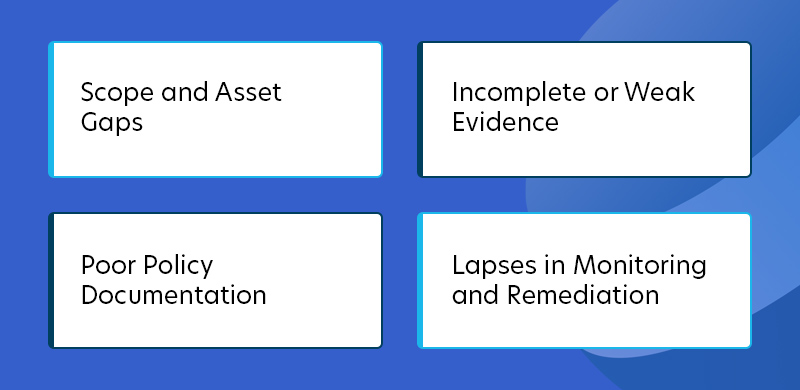
Scope and Asset Gaps
Problem: Teams often miss critical systems in their audit scope.
Solution: Maintain a real-time asset inventory and validate your scope against all data flows and dependencies.
Incomplete or Weak Evidence
Problem: Missing logs, screenshots, or control artifacts derail audit progress.
Solution: Automate evidence collection and validate that all artifacts are timestamped, attributable, and mapped to controls.
Poor Policy Documentation
Problem: Having controls in place isn’t enough if your policies don’t back them up.
Solution: Write clear, updated policies and procedures. Track who’s reviewed and accepted them.
Lapses in Monitoring and Remediation
Problem: A single missed access review or unpatched vulnerability can trigger findings.
Solution: Monitor controls continuously. Resolve failures fast and document every fix.
Avoiding these pitfalls keeps your SOC 2 Type II audit on track and strengthens your security posture in the process.
Post-Audit: Remediation, Reporting, and Continuous Improvement
What you do after the SOC 2 Type II audit determines whether your controls improve or degrade over time.
Triage and Fix Audit Findings
-
- Review the audit report in detail. Separate minor observations from control failures.
- Prioritize remediation based on risk impact. Assign owners and set deadlines.
- Document every fix with updated evidence and link it to the original finding.
Deliver the Report with Confidence
Distribute your final SOC 2 Type II report to customers, partners, and internal stakeholders.
-
- Include a summary of the scope, audit period, and Trust Services Criteria covered.
- Keep track of who receives the report and under what terms (e.g., NDA).
Use the Audit to Get Better
-
- Hold a post-mortem to discuss what worked and what didn’t.
- Adjust controls that underperformed or created friction.
- Update policies, tooling, and monitoring to strengthen your audit position for the next cycle.
Treat every SOC 2 audit as a feedback loop. Strong remediation and continuous improvement drive long-term trust and operational maturity.
What to Do Next: Your Path to SOC 2 Type II Compliance
SOC 2 Type II compliance needs tight scoping, strong technical controls, complete evidence, and constant monitoring. Follow the steps outlined above to stay ahead of risks, streamline your audit, and prove your commitment to security and reliability.
Start your readiness process now and automate it wherever possible.
TrustNet’s GhostWatch makes that easy:
- Assigns a dedicated compliance manager to guide your audit from day one
- Runs a deep readiness assessment with expert-led gap analysis and remediation planning
- Facilitates pre-certification, coordinates with auditors, and drives outcomes
- Delivers customized policies, updated controls, and clean audit documentation
- Provides transparent reporting and full year-round monitoring via one unified platform
GhostWatch doesn’t just check boxes. It helps your team operationalize compliance and reduce risk at scale.
or request a demo of GhostWatch
Subscribe to the TrustNet Newsletter
actionable cybersecurity strategies, and TrustNet’s cutting-edge solutions.

